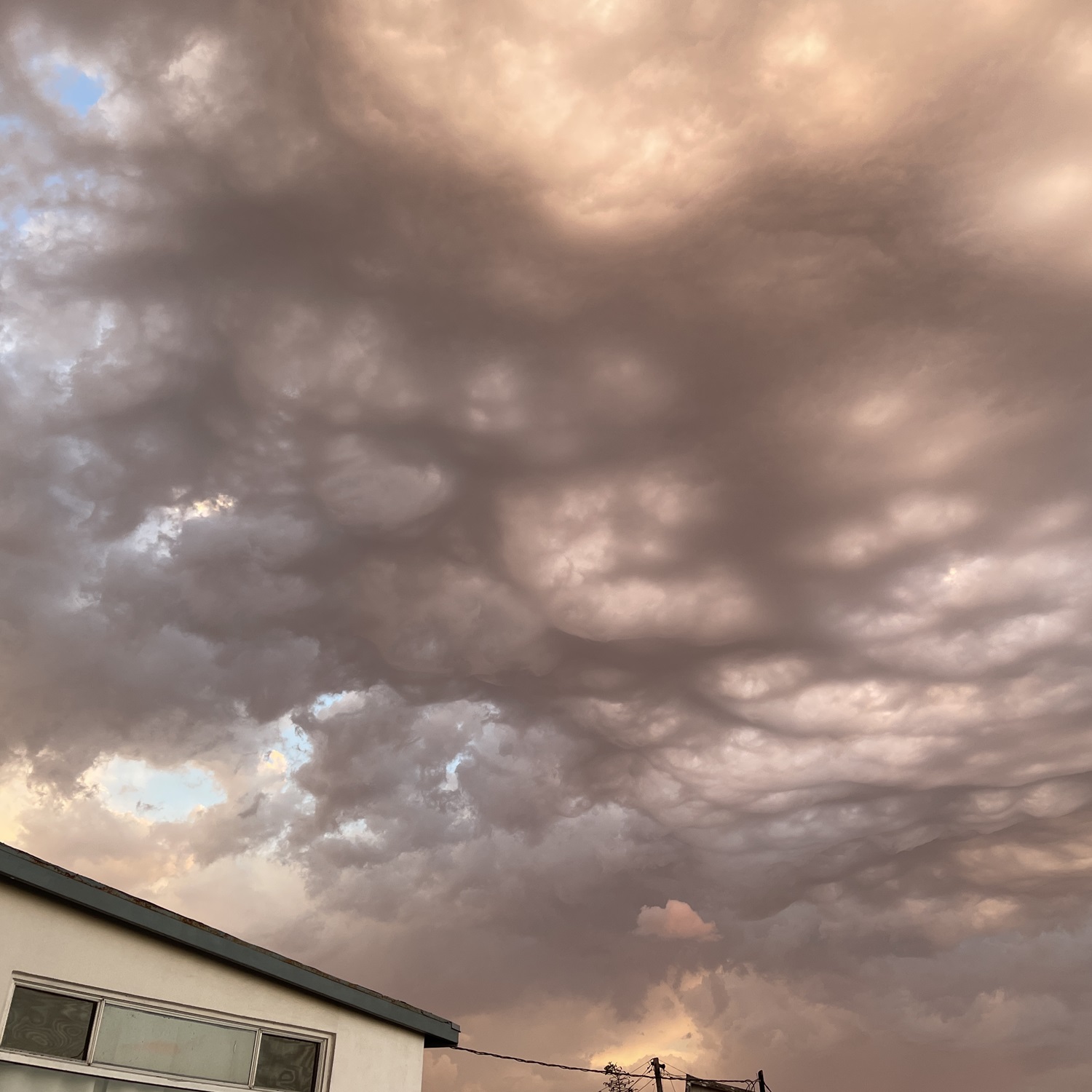While visiting family last Thanksgiving, Billie Van Wieren (Member 44,096) was shown this cloud formation by her cousin-in-law Omar Dominguez. ‘I told him I thought it was an example of asperitas,’ said Billie, ‘but now I’m not too sure.’ Asperitas clouds, which take their name from the Latin for ‘roughness’, are when a region of cloud has the appearance of chaotic, turbulent waves that resemble a choppy sea surface. Omar’s cloud isn’t wavy enough to be an asperitas. It is in fact a classification known as Stratocumulus lacunosus.
Lacunosus, meaning ‘having holes’, is a pattern that can appear on one or another of the ten main clouds – in this case, the low clumpy layer cloud Stratocumulus. It looks like a lattice of holes or, as in Omar’s cloud, thinner patches surrounded by thicker fringes. The pattern (known more formally as a variety of cloud) can form when a layer of cool air moves over one of warm air. The denser, cooler air sinks, while the less dense, warmer air rises. And sometimes, the movement naturally arranges itself into a pattern of cells. The holes or thinner patches show where the cool air is sinking and the cloudy fringes where warm air’s rising. Lacunosus is a striking and short-lived cloud pattern – and it’s one that we certainly give thanks for.



